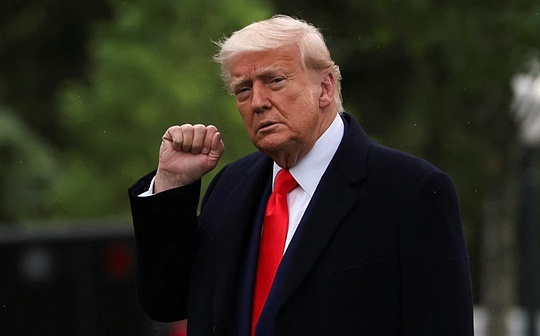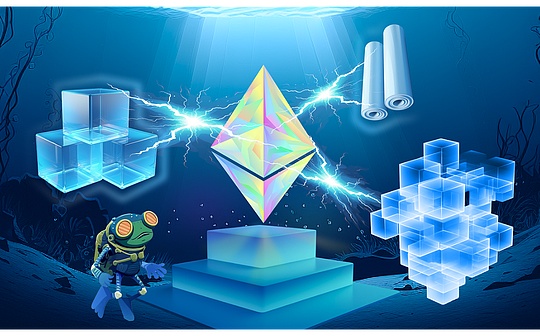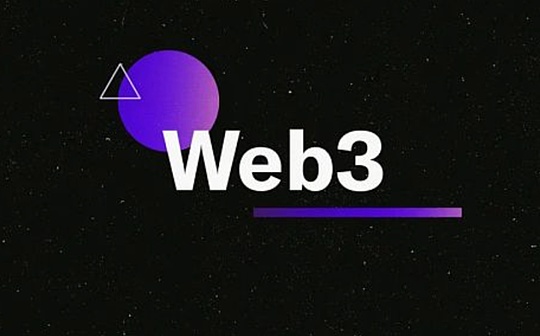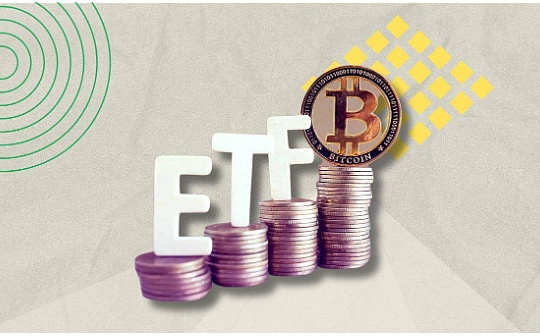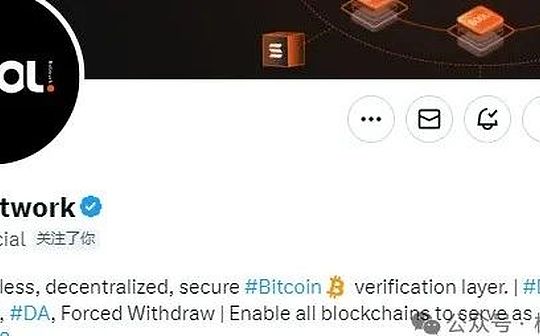
Interviewee:Jeffrey, BOOL Network
Kai, BOOL Network
Witter, hibit
Bulls, Chainswift
Since the summer of 2023, the Bitcoin ecosystem has always been the focus of people’s attention, and BTC Layer2 has fallen into the bottom after a short prosperity, which has caused some people to doubt the rationality of the second -layer narrative of BTC; in addition, the vast majority of the vast majorityThe BTC hosting scheme cannot get rid of the multi -sign/MPC model, and it has no doubt that it has become a major bottleneck restricting BTC ecological development.
To this,Geek Web3 invited BOOL Network and CEX application chain HIBIT and BTCFI project Chainswift in the ecosystem.The current status of the Bitcoin ecology and the Layer2 system, the problem of the bitcoin asset custody, the unique design of the BOOL Network on the hosting solution, the principles of Hibit and Chainswift, and the binding point with BOOL have been discussed.periodBOOL’s Jeffry pointed out that most Bitcoin is the pseudo -concept. What everyone really should do is to broaden the application scenario of BTC, especially BTCFI.
The following is a record version of this dialogue, welcome everyone to read!
>
1. Faust: Recently, from many channels, many VCs and project parties believe that the narrative of the second floor of Bitcoin reaches the bottom of the valley. It is far less popular than a few months ago. Some people even think that the EVM is the second floor of Bitcoin.Many people now turn their attention to the concept of BTCFI. What do you think about this?
Jeffrey:As far as my personal opinion is concerned, many people have no confidence in the second floor of Bitcoin. Several projects have been actively promoted in the Bitcoin ecosystem before, but now they are not even renewed.In the final analysis,The vast majority of Bitcoin did not jump out of the “WBTC-Ethereum” model.Especially EVM is layer2,It is nothing more than “the source chain locks assets, the target chain mint mapping assets”,What is the difference between this?And most of the two -layer cross -chain bridge parts are not even as safe and reliable as WBTC.
For Bitcoin, simple “expansion” is a pseudo -concept and pseudo -demand. The real need is to expand its application scenario.This is not to say that you can make a bridge and make a bridge to make a WBTC.Like babylon is a high -quality case that releases Bitcoin potential. It allows Bitcoin to empower the economic security of the POS public chain and expand the functionality in terms of functionality.
As for BTCFI, it is more about the financial scenarios to expand Bitcoin. This is more detailed than the narrative of BTC Layer2, and the focus points are more concentrated.There are so many BTCs in the Bitcoin chain in the dormant state all year round. Many old OG would rather put Bitcoin in a cold wallet.It is a lack of attractive things.If the development of BTCFI is mature, I believe it will change many issues of the Bitcoin ecosystem.
For Bool Network, we agree with the huge potential of BTCFI and Bitcoin itself. Now our main foothold is to unlock BTC’s asset potential by trylessly.Babylon’s case has explained that many parts of Web3 need to participate in Bitcoin assets. The imagination space of this piece is still very large.
2. Faust: Actually, Bitlayer’s Lianchuang Kevin has also been expressed before. Many large BTC households have the needs of assets, but the premise is to put it in a safe place.Many Bitcoin ecosystems are now risky.What do you think about the topic of asset security?
Jeffrey:In fact, asset safety is a long problem.Many people think that “users do not care whether the XX project is safe”, but the fact that “users” with such ideas are not high net worth.Many large or large institutions attach importance to asset security, and even if they are lean ice. Whether they are willing to place assets on a certain platform, the necessary conditions are security.
Take Babylon here for an example. In fact, Babylon has a flaw, which will hinder it to attract BTC large households because its penalty has no mechanism.In Babylon’s mechanism model, my BTC provides economic security for a POS application chain in the form of Staking. Correspondingly, I will get the token of the application chain as the pledge reward.
But the Token of this application chain is actually air coins compared with the real gold and silver BTC in my hand.In the process of participating in POS Staking, my BTC may be punished, that is, the rewards I get may be a bunch of air coins, but the price is the BTC that loses real gold and silver. This is difficult for large households to be difficult for large households.Accept.
Similar truth,Because the incentives provided by most BTCFI projects to participants are basically alt coin. If you want to make these people willing to ignore you, it is better to make what you do is safe enough. This is the value of asset security.
3. Fog Moon: We return the topic to BOOL Network itself.What is your self -positioning?Technically speaking, how does BOOL guarantee asset safety?I remember you said that the nodes participating in the thumbs signature in the BOOL network do not know the specific calculation content. How can this be realized?
Jeffrey:BOOL does what BTC is a trusted asset custody, and provides users with mechanisms such as forced withdrawal, escape compartment, etc., so that BTC is safely involved in BTCFI and other scenarios.We provide BTC custody facilities for cross -chain bridge, RESTAKING, BTC -based stablecoin, prophecy machine, chain trading platform, etc., but the functions to provide in these scenarios are not just as simple as taking BTC away.
It is more popular, because BTCFI almost depends on the components under the chain. When your BTC attempts to have interaction with things under the chain, how can I guarantee that BTC is still safe?This involves the way of asset custody.Most cross -chain bridges and trading platforms and DEFI platforms, the core business is asset custody,You have to hand over your assets to the third party to keep it back and take it back when you need it, but how can you guarantee that the funds are not rolled away or detained.All need to be considered.
ThisBased on the pre -signature, Taproot and time lock technology, we have built functions similar to forced withdrawal/escape compartment on the BTC chain. Users can master their initiative to their BTCs. At critical moments, they can exempt the assets withdrawn from trust.
also,We also proposed the concept of the “Dynamic Hidden Committee” based on ZK and Tee, referred to as “DHC”.Here I will talk about how DHC DHC is born with the Dynamic Hidden Committee.First of all, BOOL Network is based on asset pledge without access networks. As long as you buy specific hardware, plus certain asset pledge, you can participate in nodes in the BOOL network.
If 1,000 nodes are now distributed around the world, how can I create DHC?If it is said that a BOOL service now uses a BOOL service, you need to let BOOL create a MPC/TSS committee with a validity period of 10 minutes.That isTemporary selection from 1,000 nodes to form a committee for the signature signature, and it will dissolve and change a batch of nodes in 10 minutes.
We created the Ring VRF algorithm for this, and carried out privacy protection in combination with ZK. During the term of each committee, the identity of the 10 selected persons cannot be known, including the selected person.(This piece uses Tee).
This design has two benefits,First of all, because the DHC is dynamic, temporary, and confidential. If you want to do evil, you have to hack or bribe 7 of the 10 people in a limited time, but because of privacy protection, you don’t know who these 10 people are;Secondly, because the DHC members hide each other, the problem of evil and evil can be avoided, because the identity between each other is unknown and naturally cannot be planned.The matter of anti -skewling is very important, because most centralized multi -signing is difficult to solve the problem of evil, and our solution can be used to conspire.
In this case, unless you are hacked by most nodes of the entire BOOL network, or the design of the BOOL mechanism.In other words, the security based on DHC -based asset custody is basically the same as the security of the entire network.
Misty: Can I talk about the use of TEE (trusted execution environment)?
Jeffrey:Tee is actually a black box. Programs and data can be encrypted and stored in the black box. Even the device operator does not know what the Tee runs.
We just said that BOOL used Tee. If you do n’t need Tee, node operators can observe the account number of the current DHC participants through a certain way, and even attack the election program itself.Coupled with the Tee, it is equivalent to put the program and data in the black box. The node operator cannot know the account, key and other information sealed in the Tee.
Someone has asked before, since you used Tee, why do you still need to use technologies such as ZK and MPC/TSS?In fact, it is mainly to enhance the overall safety of the system. If I run a TEE -based node, and then this node is hung up,Since the MPC/TSS itself has a good fault tolerance, the network can still run normally, that is, MPC and TSS can enhance the faulty attributes on the basis of Tee.With ZK, it can protect the privacy of DHC and people and prevent conspiracy.In summary, we chose a composite technology such as Tee+MPC+ZK to ensure the safety of the system to the greatest extent.
Many people have criticized before saying that TEE will use more decentralized remote authentication methods. For example, if we use SGX, it will involve the impact of centralized companies such as Intel.However, we have implemented remote authentication procedures in the form of smart contracts, and the authentication method can become decentralized (Scroll and TAIKO also use similar ideas).Even if Intel changes one day, our program can still run.
KAI:I supplement this part.BOOL node running program is highly automated,The main function of TEE is to separate the procedures and data that require confidentiality in the BOOL client, and isolate the part of the program that interacts with the usual human -computer.But it retains some foundations, such as login, interaction and other interfaces.As long as the node starts, it is better to verify it later, or submit SGX Proof to the chain. The entire program is automated and is locked in the Tee black box.
Tee hardware will make a logo to any information submitted by the BOOL node, which is convenient for the outside world to verify whether the BOOL node runs in Tee.If he is not running in the Tee, the smart contract arranged on the chain will be Slash on the pledged assets of the node.
4. Faust: Today, the project in the BOOL ecosystem is also there. For example, Hibit wants to make a decentralized order book trading platform, and use Bool Network and ICP as infrastructure to solve the problem of asset custody and data verification and asset snapshot.
In this regard, there is a trading platform called Degate, which makes himself a form of Ethereum Layer2, similar to the road printing agreement.If you compare you from the Degate and the road printing protocol, where are the similar points and differences?
Witter:In fact, this problem is related to information transparency and assets withdrawal.CEX has many disadvantages. For example, it can misappropriate user assets, can manipulate the liquidity and smash it. Although DEX solves these problems to a large extent, it also faces the trouble of limited TPS and multi -chain liquidity splitting.
An idealized trading platform model is a centralized performance experience. At the same time, it has decentralized credibility and data verification, and can connect to the full -chain, including full -chain assets and full -chain wallets.Our goal is to be such a platform.
So how to achieve these?firstWe have our own architecture similar to Layer2 and application chain,There is a fixed sorter node in the HIBIT network, and then there are hundreds of validator, but there is no direct consensus between these nodes.piece.
So how to ensure that the data update of different nodes is consistent?We deployed Verifier smart contracts on high -performance public chains such as ICP and Solana, and directly allowed HIBIT nodes to send local block hair to Verifier contracts. As long as most nodes submitted the block header, they considered consensus.The reason why we do this is mainly to reduce the overhead generated by frequent communication between different Validator nodes, and to the greatest extent to increase the TPS.
It is worth mentioning that we will synchronize the block head or block hash to the Bitcoin chain, and through the OP_RETURN operating code, this is actually equivalent to anchoring the block and Bitcoin block of the HIBIT to prevent it to prevent it to preventrollback.
Faust: I want to ask here that the Degate and the road printing protocol have compulsory withdrawal/escape compartment functions, which allows users to bypass the permission of the platform to force assets to withdraw from the trading platform.Do you have a similar mechanism design about this?
Witter:If we correspond to the scenario of the trading platform, we must consider some extreme situations, such asSomeone was reviewed and the platform refused to handle a person’s request. At this time, the user needs to be forced to withdraw the assets. This is the case.
Ethereum ZK Rollup’s escape compartment depends on the state snapshot, that is, I want to force my assets from Layer2 to the Ethereum chain. You must first show the asset balance snapshot to prove how much assets I have at XX.So where these asset snapshot data is stored is a problem.
To this,Hibit uses a modular asset management solution,We store the balance of user assets at low -cost storage platforms such as ICP, IPFS or Arweave. When you need it, you can go to these platforms to read data.As I mentioned earlier, Hibit records the block haSh on the Bitcoin chain. Based on these Block Hash, you can check whether there is a problem with the state snapshot that you get in Arweave and other places.
As for the forced withdrawal function, we set up this part of the module on the BOOL Network. You can verify the asset snapshot through smart contracts on multiple public chains to determine that you have the XX amount of money stored on the HIBIT platform, and then you can take theThe money belonging to its own is forced from the Hibit’s hosting wallet.The deeper details are how to interact with the Hibit’s hosted wallet with the contract verification of the snapshot. In fact, the person with the BOOL Network is more appropriate, and I will not expand it here.
Faust: I have a question here, how to ensure that the HIBIT node will definitely send a state snapshot on ICP and Arweave without being lazy?
Witter: There are selected nodes to submit the snapshot data to be responsible.As long as these nodes are submitted to the data.It should be noted here that the HIBIT verification nodes should submit the block heads first, so that the Verifier contracts on the ICP and Solana chain are consistent, pass the verification, and then the exclusive nodes will go to the state snapshot corresponding to the block head head head head head head head.If you have not submitted it for a long time, or the submitted snapshot and the block head cannot correspond, it will be SLASH.
5. Faust: Next, please introduce your own project?What do you seem to do is a BTC -based stablecoin protocol?How are your mechanism design?
buffalo:What Chainswift does is actually to allow users to mortgage BTC to borrow stablecoins, similar to MakerDao.However, this platform still has asset management attributes. BTC needs to pledge to a security address, which is the key.BOOL Network can just provide this security. We can directly allow the Bool network to provide MPC/TSS services and store BTC assets into the BOOL network -hosted bitcoin Taproot address.After the user hit the BTC to this Taproot address, you can cross this money to other platforms and participate in cast stablecoins.This is the general framework of Chianswift.
Faust: How do you choose the prophecy machine used by the protocol?
buffalo:The prediction machine is to say how to provide BTC quotations for the designated platform.On the one hand, we can refer to the quotation of WBTC in DEX with a strong liquidity on the chain; on the other hand, we also have to choose a dozen nodes, which can obtain the quotation from the data sources outside the chain.Finally, we obtained a reasonable value through the median algorithm, which is actually similar to the principle of ChainLink.
However, because it is a quotation on the chain, the price curve must not be as accurate to seconds as in CEX, and it can probably be accurate to the hour level.If the price appears in a short period of time, this median number method will automatically help it, which will not cause problems with the clearance mechanism.As for the clearance mechanism, it is actually similar to Makerdao.
6. Faust: Finally, talk about BOOL Network itself.As far as I know, Bool Network is divided into two parts. The main part is the DHC alternative network mentioned earlier, and the other part is the Bool Chian similar to the beacon chain.What is the entry threshold for BOOL CHAIN and DHC alternative nodes?
Jeffrey:BOOL CHAIN is an ordinary POS chain based on the Boka Substrate framework.As for why Substrate is used, this is because in the consensus algorithm of the POS chain (simply speaking consensus algorithms), Boka’s consensus algorithm is the most centralized and can support thousands of nodes.Many results, such as its relatively complete chain governance system, is convenient for our subsequent landing to DAO model.
BOOL’s DHC node is currently only based on asset pledge. You only need to purchase a device with Tee hardware, and this machine is also universal and the cost is not high.Although both nodes require asset pledge, in order to ensure decentralization, we will make the pledge threshold as low as possible.

